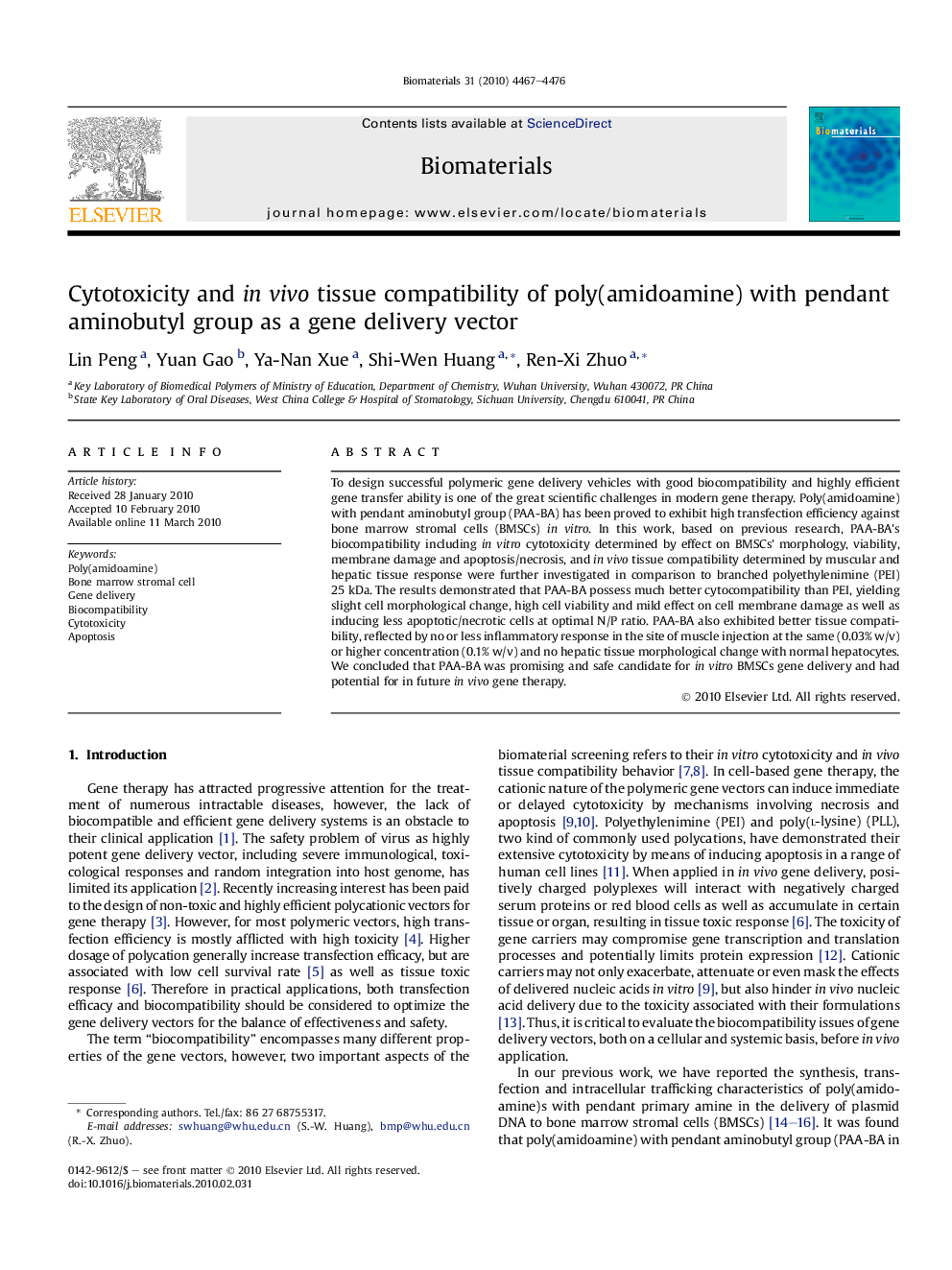| Article ID | Journal | Published Year | Pages | File Type |
|---|---|---|---|---|
| 9002 | Biomaterials | 2010 | 10 Pages |
To design successful polymeric gene delivery vehicles with good biocompatibility and highly efficient gene transfer ability is one of the great scientific challenges in modern gene therapy. Poly(amidoamine) with pendant aminobutyl group (PAA-BA) has been proved to exhibit high transfection efficiency against bone marrow stromal cells (BMSCs) in vitro. In this work, based on previous research, PAA-BA's biocompatibility including in vitro cytotoxicity determined by effect on BMSCs' morphology, viability, membrane damage and apoptosis/necrosis, and in vivo tissue compatibility determined by muscular and hepatic tissue response were further investigated in comparison to branched polyethylenimine (PEI) 25 kDa. The results demonstrated that PAA-BA possess much better cytocompatibility than PEI, yielding slight cell morphological change, high cell viability and mild effect on cell membrane damage as well as inducing less apoptotic/necrotic cells at optimal N/P ratio. PAA-BA also exhibited better tissue compatibility, reflected by no or less inflammatory response in the site of muscle injection at the same (0.03% w/v) or higher concentration (0.1% w/v) and no hepatic tissue morphological change with normal hepatocytes. We concluded that PAA-BA was promising and safe candidate for in vitro BMSCs gene delivery and had potential for in future in vivo gene therapy.
